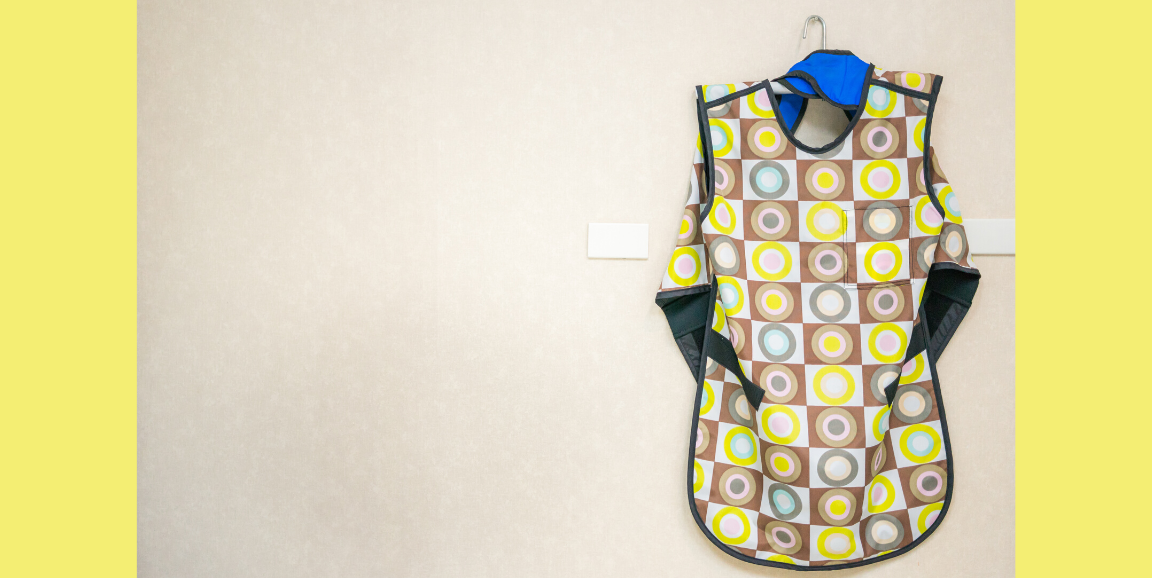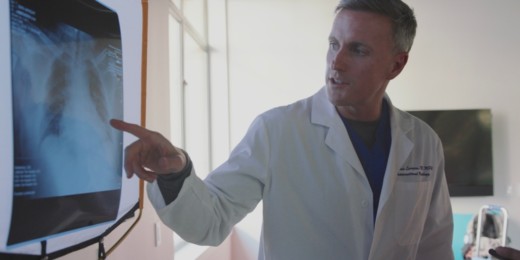When you get routine X-rays of your teeth at the dentist's office or a chest X-ray to determine if you have pneumonia, you expect the technologist to drape your pelvis in a heavy radioprotective apron. But that may not happen the next time you get X-rays.
There is growing evidence that shielding reproductive organs has negligible benefit; and because a protective cover can move out of place, using it can result in an increased radiation dose to the patient or impaired quality of diagnostic images.
Shielding testes and ovaries during X-ray imaging has been standard practice since the 1950s due to a fear of hereditary risks -- namely, that the radiation would mutate germ cells and these mutations would be passed on to future generations. This concern was prompted by the genetic effects observed in studies of irradiated fruit flies. However, such hereditary effects have not been observed in humans.
"We now understand that the radiosensitivity of ovaries and testes is extremely low. In fact, they are some of the lower radiation-sensitive organs -- much lower than the colon, stomach, bone marrow and breast tissue," said Donald Frush, MD, a professor of pediatric radiology at Lucile Packard Children's Hospital Stanford.
In addition, he explained, technology improvements have dramatically reduced the radiation dose that a patient receives during standard X-ray films, computerized tomography scans and other radiographic procedures. For example, a review paper finds that the radiation dose to ovaries and testes dropped by 96% from 1959 to 2012 for equivalent X-ray exams of the pelvis without shielding.
But even if the radioprotective shielding may have minimal -- or no -- benefit, why not use it to be safe?
The main problem is that so-called lead aprons -- which aren't made of lead anymore -- are difficult to position accurately, Frush said. Even following shielding guidelines, the position of the ovaries is so variable that they may not be completely covered. Also, the protective shield can obscure the target anatomy. This forces doctors to live with poor-quality diagnostic information or to repeat the X-ray scan, thus increasing the radiation dose given to the patient, he said.
Positioning radioprotective aprons is particularly troublesome for small children.
"Kids kick their legs up and the shield moves while the technologists are stepping out of the room to take the exposure and can't see them. So the X-rays have to be retaken, which means additional dose to the kids," Frush said.
Another issue derives from something called automatic exposure control, a technology that optimizes image quality by adjusting the X-ray machine's radiation output based on what is in the imaging field. Overall, automatic exposure control greatly improves the quality of the X-ray images and enables a lower dose to be used.
However, if positioning errors cause the radioprotective apron to enter the imaging field, the radiographic system increases the magnitude and length of its output in order to penetrate the shield.
"Automatic exposure control is a great tool, but it needs to be used appropriately. It's not recommended for small children, particularly in combination with radioprotective shielding," Frush said.
With these concerns in mind, many technologists, medical physicists and radiologists are now recommending to discontinue the routine practice of shielding reproductive organs during X-ray imaging. However, they support giving technologists discretion to provide shielding in certain circumstances, such as on parental request. This position is supported by several groups, including the American Association of Physicists in Medicine, National Council on Radiation Protection and Measurements and American College of Radiology.
These new guidelines are also supported by the Image Gently Alliance, a coalition of heath care organizations dedicated to promoting safe pediatric imaging, which is chaired by Frush. And they are being adopted by Stanford hospitals.
"Lucile Packard Children's revised policy on gonadal shielding has been formalized by the department," he said. "There is still some work to do with education, including training providers and medical students to have a dialogue with patients and caregivers. But so far, pushback by patients has been much less than expected."
Looking beyond the issue of shielding, Frush advised parents to be open to lifesaving medical imaging for their children, while also advocating for its best use. He said:
Ask the doctor who is referring the test: Is it the right study? Is it the right thing to do now, or can it wait? Ask the imaging facility: Are you taking into account the age and size of my child to keep the radiation dose reasonable?
Photo by Shutterstock / pang_oasis






